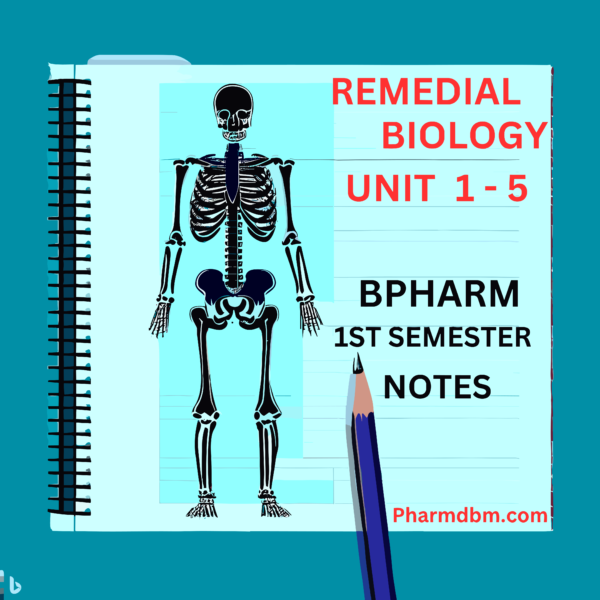
Free Download Remedial Biology Notes in pdf – Bpharm 1st Semester. High quality, well-structured and Standard Notes that are easy to remember.
Welcome to Pharmdbm.com
Pharmdbm provides standard or well-structured Notes for Bpharm students. The notes are free to download. Each semester notes of Bpharm are available on www.pharmdbm.com.
In this post you can download notes of Remedial Biology (BP106RBT). All units are available to download for free.
Remedial Biology Notes of all units are available below:
Remedial Biology Notes Unit 1 – 5
UNIT – 1
Living world, Morphology of Flowering plants
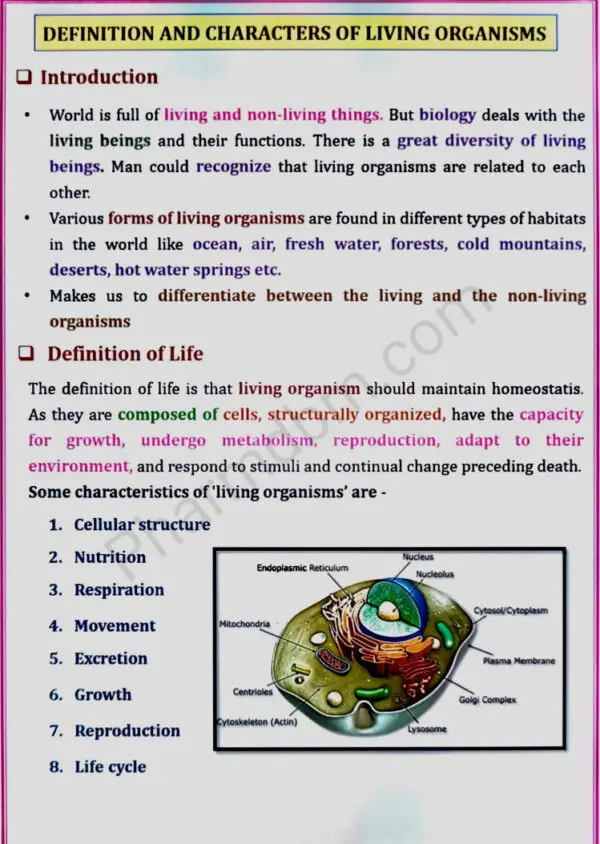
UNIT – 2
Body fluids and circulation, Digestion and Absorption, Breathing and respiration
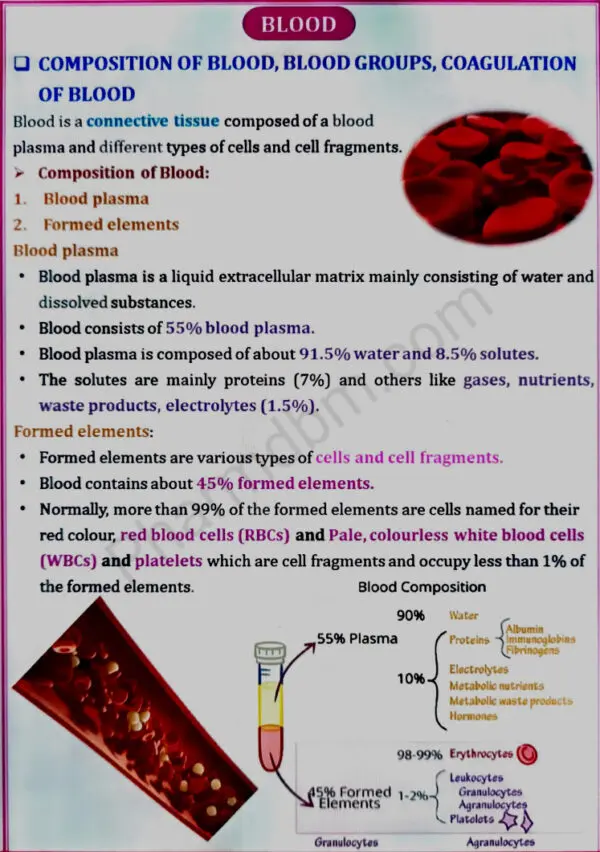
UNIT – 3
Excretory products and their elimination, Neural control and coordination, Chemical coordination and regulation, Human reproduction
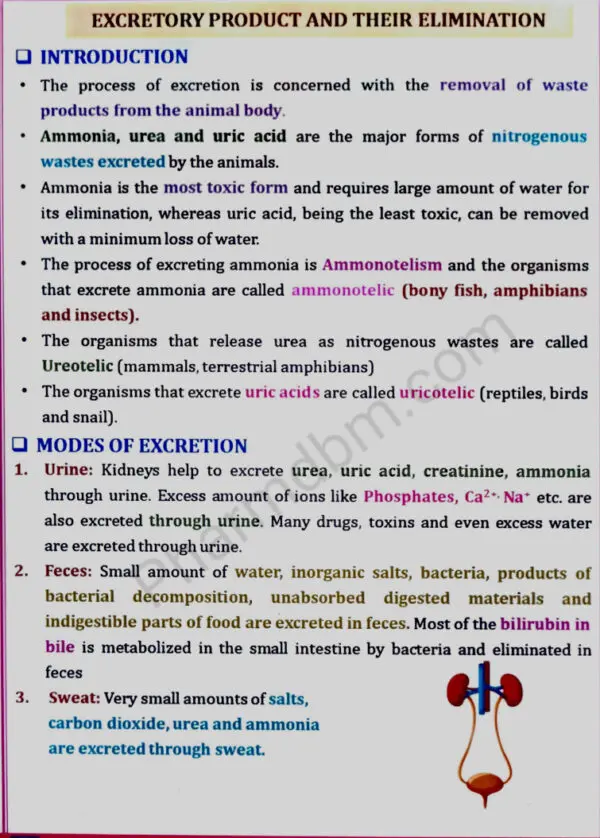
UNIT – 4
Plants and mineral nutrition, Photosynthesis
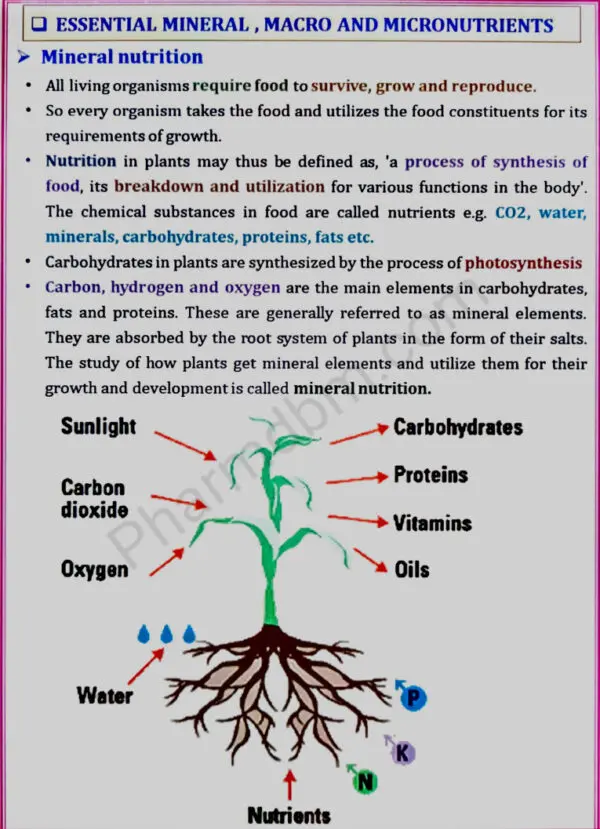
UNIT – 5
Plant respiration, Plant growth and development, Cell – The unit of life, Tissues
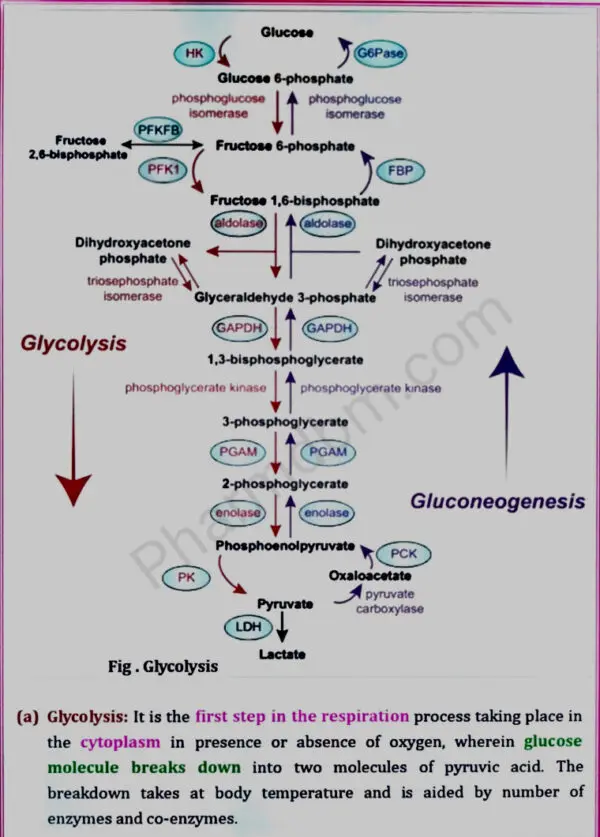
Bpharm 1st-Semester Subject lists
Human Anatomy and Physiology 1
Pharmaceutical Inorganic Chemistry
Syllabus of Remedial Biology (BP106RBT)
UNIT – 1
Living world:
Definition and characters of living organisms
Diversity in the living world
Binomial nomenclature
Five kingdoms of life and basis of classification. Salient features of Monera, Potista, Fungi, Animalia and Plantae, Virus,
Morphology of Flowering plants
Morphology of different parts of flowering plants – Root, stem, inflorescence, flower, leaf, fruit, seed.
General Anatomy of Root, stem, leaf of monocotyledons & Dicotylidones.
UNIT – 2
Body fluids and circulation
Composition of blood, blood groups, coagulation of blood
Composition and functions of lymph
Human circulatory system
Structure of human heart and blood vessels Cardiac cycle, cardiac output and ECG
Digestion and Absorption
Human alimentary canal and digestive glands Role of digestive enzymes Digestion, absorption and assimilation of digested food
Breathing and respiration
Human respiratory system
Mechanism of breathing and its regulation
Exchange of gases, transport of gases and regulation of respiration
Respiratory volumes
UNIT – 3
Excretory products and their elimination
Modes of excretion
Human excretory system- structure and function
Urine formation
Rennin angiotensin system
Neural control and coordination
Definition and classification of nervous system
Structure of a neuron
Generation and conduction of nerve impulse,structure of brain and spinal cord
Functions of cerebrum, cerebellum, hypothalamus and medulla oblongata
Chemical coordination and regulation
Endocrine glands and their secretions
Functions of hormones secreted by endocrine glands
Human reproduction
Parts of female reproductive system
Parts of male reproductive system
Spermatogenesis and Oogenesis
Menstrual cycle
UNIT – 4
Plants and mineral nutrition:
Essential mineral, macro and micronutrients
Nitrogen metabolism, Nitrogen cycle, biological nitrogen fixation
Photosynthesis:
Autotrophic nutrition, photosynthesis, Photosynthetic pigments, Factors affecting
photosynthesis.
UNIT – 5
Plant respiration: Respiration, glycolysis, fermentation (anaerobic).
Plant growth and development
Phases and rate of plant growth, Condition of growth,Introduction to plant growth
regulators
Cell – The unit of life
Structure and functions of cell and cell organelles.Cell division
Tissues Definition, types of tissues, location and functions.
Scope of Remedial Biology
To learn and understand the components of living world, structure and functional
system of plant and animal kingdom.
Objectives of Remedial Biology
Upon completion of the course, the student shall be able to:
Know the classification and salient features of five kingdoms of life.
Understand the basic components of anatomy & physiology of plant.
Know understand the basic components of anatomy & physiology animal with
special reference to human.
